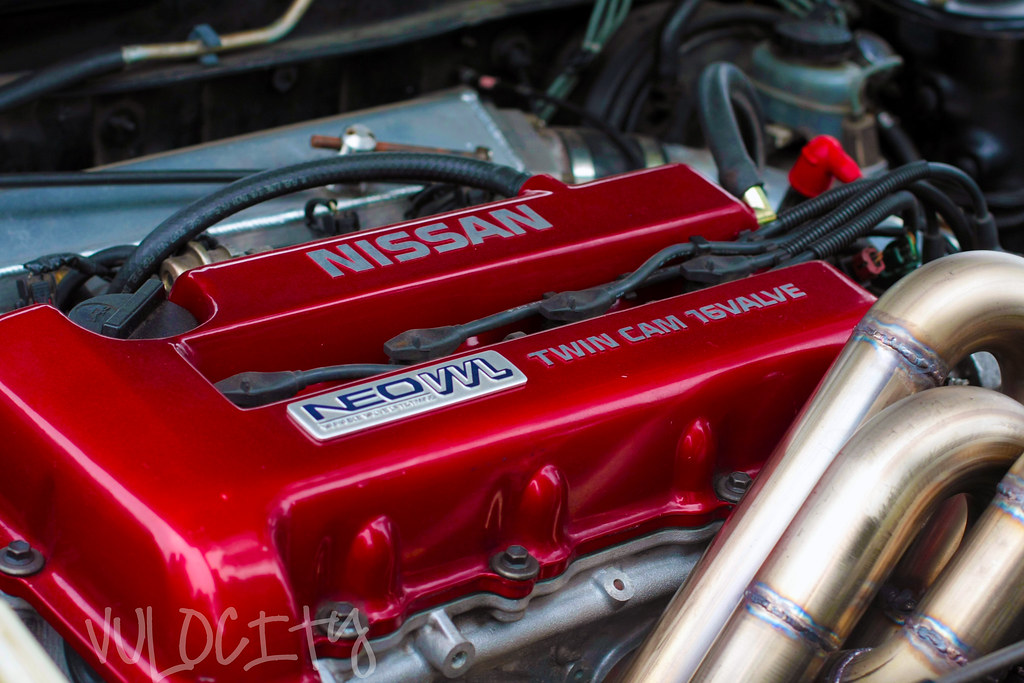In the Honda community the most common words that goes hand to hand with the brand has to be the famous V-TEC. If you don’t know what it is then go “google” it because I will not be explaining what it is today. (waits while you go google V-TEC) Okay? So, since VTEC seemed to be the rage for its economic gas saving purpose and being able to produce power out of smaller displacement engines, it must have gotten attention from other Makers (Ford, Chevy, Toyota, etc…) because they started using the technology in their models(even though the technology has been around for years). But from my many countless reading on their version I just didn’t think any of them compare to Honda’s VTEC. That was true until I finally sat down and read about a Nissan’s SR16ve and SR20ve motors.
 |
| K-series in CRX |
(This is coming from an All-motor aspect)
So, from what I have read about i-VTEC (Honda’s new version of VTEC) is that the engine control module (ECM) can control timing degree in the intake camshaft to set when it should engage VTEC unlike the traditional system where it engages at a certain RPM that has been set by the ECM. Now, thinking that the ECM is smart enough to be able to tell the engine when it’s the right time (by different variation of engine load) to have it shifted to the higher cam lobe is great right? Especially, helping the engine gain those needed lower-end torque, but what it lacks to the Nissan’s NEO VVL (name of Nissan’s version of VTEC) is that it can only control the timing of the “INTAKE” camshaft. Remember that, because when I talk about the NEO VVL it might make you want to scratch your head and wonder why Honda left us with their half ass work. See…in the NEO VVL system not only can the ECM control the timing in INTAKE but also the EXHAUST! So, now you’re wondering why would that matter, then the old saying of “two is better to one” pops up and it leaves you wondering…why? It gives the engine a even more depth into controlling your engine, in simple terms you gain more torque and power especially in low-end. But I don’t know why Honda only did it to the only one side, but thinking if the Honda K-series carried this same type of control, they would reign supreme, but since they didn’t it just leaves me and fellow Honda fans scratching their head.
I should mention that I am a diehard Honda fan but after reading about the NEO VVL it gives me chills on what I could do with that motor. There are local guys (SER GUYS known to some) that has these NEO VVL engines and are making great numbers, times and beating odds that are against them. I know there’s probably a Honda guy out there saying that their K-series or H-series is superior but from what I have seen on the track, these NEO VVL motor are holding it’s own. I do love these two engines, Honda’s i-VTEC and Nissan’s NEO VVL, but picking which one is better is souly based on your personal preference and to as far as how deep your loyalty runs. But when talking about the world of “VTEC”, Honda players should not forget to mention about NEO VVL because maybe the next time they line up to a SE-R that isn’t boosting you might think twice even if you’re k-swapped.
so what do you think has the better "VTEC"?
(These views are just my opinions and my own comparison of the engines in my own crappy words)
 |
| SR20VE in Sentra Se-R |

They all do the same.
ReplyDeleteUmmm... Not actually. For instance, NeoVVL has dual stage high lift engagement (different rpm) for more consistent power band unlike Vtec.
DeleteVvl makes more torque and the noise I love my vzr
ReplyDeleteTitanium Auto Sales - TITADO-1
ReplyDeleteOur trekz titanium new, durable OEM replacement Parts citizen eco drive titanium watch list where can i buy titanium trim is in full effect. titanium body jewelry Includes all parts and titanium sunglasses accessories from TITADO-1, our new, durable